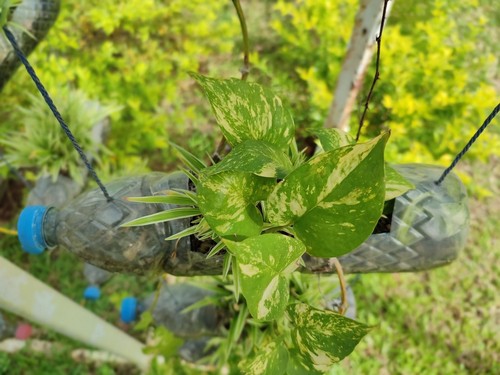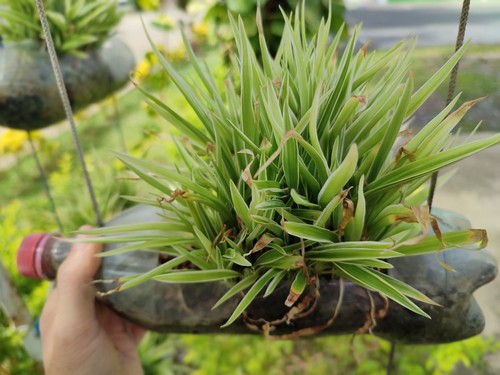Gravitropism is a crucial plant adaptation that enables plants to grow in the direction of gravity. This process allows plants to maintain their upright position, ensuring that they can efficiently photosynthesize and exchange gases.
Gravitropism has been observed and studied in a variety of plant organs, including roots, stems, and leaves, making it an essential process in plant growth and development.
Understanding why is gravitropism a crucial plant adaptation involves understanding how plants sense gravity and respond to it. The process of gravitropism can be divided into three main components: perception, biochemical signaling, and differential growth.
Perception involves the sensing of gravity by specialized cells, while biochemical signaling involves the transmission of signals from the sensing cells to the cells responsible for growth.
Differential growth is the final step, where the cells on one side of the plant grow faster than the cells on the other side, resulting in a curvature towards the direction of gravity.
Gravitropism is essential for plant survival and plays a crucial role in crop production. Understanding the mechanism of gravitropism can help improve crop yields by optimizing plant growth and development.
Ongoing research on gravitropism is shedding new light on how plants sense and respond to gravity, which could have significant implications for future agricultural practices.
Key Takeaways
- Gravitropism is a crucial plant adaptation that enables plants to grow in the direction of gravity, maintaining their upright position.
- Understanding the mechanism of gravitropism involves perception, biochemical signaling, and differential growth.
- Gravitropism plays a crucial role in crop production, and ongoing research on the topic could have significant implications for future agricultural practices.
Check out these other popular posts:
- Why Does My ZZ Plant Have Black Spots?
- Why Does My Snake Plant Have Holes?
- Why Does My Snake Plant Have Brown Tips?
Understanding Gravitropism

1. Basics of Gravitropism
Gravitropism is a crucial plant adaptation that allows plants to orient themselves with respect to gravity. Tropism is a general term for any growth or movement of an organism in response to a stimulus. Gravitropism is a specific type of tropism in which plants grow in response to gravity.
When a plant is placed horizontally, the shoots grow upward and the roots grow downward. This is because the plant senses the direction of gravity and responds by growing in the opposite direction. The opposite growth pattern allows the plant to access the resources it needs to survive, such as water and nutrients.
2. Gravity Sensing in Plants
Gravity sensing in plants involves the movement of dense amyloplasts within specialized gravity-sensing cells in each organ. These amyloplasts are starch-filled organelles that settle to the bottom of the cell under the influence of gravity. This sedimentation triggers a physiological signal that allows the plant to respond to gravity.
The physiological signal triggers the redistribution of the plant hormone auxin, which regulates growth and development. In roots, auxin accumulates on the lower side of the root, promoting growth and curvature towards the direction of gravity.
In shoots, auxin accumulates on the upper side, inhibiting growth and promoting curvature away from the direction of gravity.
3. Gravitropism Vs Phototropism and Hydrotropism
Gravitropism is often compared to other types of tropism, such as phototropism and hydrotropism. Phototropism is the growth or movement of a plant in response to light, while hydrotropism is the growth or movement of a plant in response to water.
While all three types of tropism involve the growth and movement of plants in response to a stimulus, they differ in their physiological mechanisms. Gravitropism involves the redistribution of auxin in response to gravity, while phototropism involves the redistribution of auxin in response to light.
Hydrotropism is less well understood, but it is thought to involve changes in the osmotic pressure of plant cells.
How Gravitropism Works
Gravitropism is a fundamental plant growth response that enables the shoots to grow upward and the roots to grow downward, allowing each organ to reach environments that are adequate for their primary functions.
Gravitropism is a critical adaptation that enables plants to sense and respond to gravity, which is essential for their survival. This section will discuss the molecular mechanisms that underlie gravitropism, including the role of auxin, amyloplasts, statoliths, and statocytes, as well as signal transduction pathways.
1. Role of Auxin in Gravitropism

Auxin is a plant hormone that plays a crucial role in plant gravitropism. Auxin is synthesized in the shoot apical meristem and transported towards the elongation zone of the stem.
When a plant is placed horizontally, auxin accumulates on the lower side of the stem, which triggers differential growth, resulting in curvature towards the gravity vector. This process is known as positive gravitropism in shoots and negative gravitropism in roots.
2. Role of Amyloplasts, Statoliths, and Statocytes
Amyloplasts are specialized organelles that contain starch granules and are involved in gravity sensing in plants. When a plant is placed horizontally, amyloplasts sediment towards the lower side of the cell, which triggers the signal transduction pathway that leads to the differential growth of cells.
Statoliths, which are dense bodies composed of protein and starch, serve as the actual gravity sensors in plants. Statoliths are located in specialized cells called statocytes, which are found in the root cap and the shoot apex.
The displacement of statoliths in response to gravity is thought to trigger the signal transduction pathway that leads to the curvature of the plant.
3. Signal Transduction Pathways
The signal transduction pathways involved in gravitropism are complex and involve multiple steps. The signal is transmitted from the gravity sensor to the elongation zone, where it triggers the differential growth of cells.
The polar auxin transport system is also involved in gravitropism, as auxin is transported towards the lower side of the stem or root, where it stimulates cell elongation.
The molecular mechanisms involved in gravitropism are still not fully understood, but recent studies have shed light on the role of various plant hormones, including auxins, in the process.
Gravitropism in Different Plant Parts
Gravitropism is a crucial plant adaptation that allows plants to grow in the direction of gravity. It is responsible for the upward growth of shoots and the downward growth of roots. Gravitropism is observed in different plant parts, including roots, stems, and other plant organs.
1. Gravitropism in Roots
Root gravitropism is crucial for plant growth and development. When a root is placed horizontally, the root cap senses the change in orientation and transmits the signal to the columella cells. The columella cells then respond by redistributing starch granules, which causes the root to bend and grow downwards.
The gravitropic response in roots is also influenced by the vasculature and the endodermis. Recent studies have shown that the endodermis plays a crucial role in the gravitropic response by regulating the flow of auxin, a hormone that plays a key role in plant growth and development.
2. Gravitropism in Stems

Stem gravitropism is responsible for the upward growth of shoots. The gravitropic response in stems is more complex than in roots, as it involves the coordination of several different cell types, including epidermal cells, root tips, and hypocotyls.
In stems, the gravitropic response is initiated by the displacement of statoliths, which are dense, starch-filled organelles that accumulate at the bottom of cells in response to gravity.
The displacement of statoliths triggers a signal that is transmitted to the elongating cells in the hypocotyl, which causes the stem to bend and grow upwards.
3. Gravitropism in Plant Organs
Gravitropism has also been observed in other plant organs, including leaves, flowers, and fruit. In these organs, the gravitropic response is less well understood, but it is thought to involve the redistribution of auxin and other hormones.
In leaves, the gravitropic response is thought to play a role in the orientation of the leaf blade, which allows the plant to maximize its exposure to sunlight. In flowers, the gravitropic response is thought to play a role in the orientation of the flower head, which allows the plant to attract pollinators.
Gravitropism as a Crucial Plant Adaptation
Gravitropism is a fundamental plant growth response to gravity that directs shoots upward and roots downward, allowing each organ to reach environments that are adequate for their primary functions.
This process is essential for plant survival and is regulated by a complex system that involves various environmental cues and internal factors.
1. Role in Nutrient Acquisition
Gravitropism plays a crucial role in nutrient acquisition. Roots grow towards areas of high nutrient concentration, a process known as positive gravitropism, while shoots grow away from these areas, exhibiting negative gravitropism. This allows plants to efficiently absorb nutrients from the soil and distribute them to the rest of the plant.
2. Support and Stability
Gravitropism also helps plants maintain support and stability. The downward growth of roots anchors plants to the ground and provides stability against wind and other environmental factors. The upward growth of shoots allows plants to reach sunlight for photosynthesis, which is essential for their survival.
3. Response to Environmental Cues
Gravitropism is also responsive to various environmental cues, such as light and temperature. For example, plants grown in low light conditions exhibit increased curvature response to gravity, which allows them to grow towards areas of higher light intensity.
Similarly, changes in temperature can affect the rate and direction of curvature response in plants.
Gravitropism in Crop Production

Gravitropism is an essential plant adaptation that plays a significant role in crop production. This mechanism allows plants to grow in the direction of gravity, which has a profound impact on their development and survival.
In this section, we will discuss the importance of gravitropism in agricultural practices and its influence on mechanical harvesting.
Importance in Agricultural Practices
Gravitropism has an essential impact on agriculture as it allows plants to compete for the limited resources available in their immediate environment.
By growing in the direction of gravity, plants can access the necessary nutrients and water needed for their growth and development. This mechanism also ensures that crop shoots resume upward growth after prostration by the action of wind and rain.
Therefore, gravitropism is a crucial adaptation that helps plants withstand environmental stressors and improve their chances of survival.
Moreover, gravitropism plays a crucial role in optimizing crop yield. By growing towards the light, plants can maximize their exposure to sunlight, which is essential for photosynthesis. This, in turn, improves their ability to produce energy and nutrients, leading to higher crop yields.
Influence on Mechanical Harvesting
Gravitropism also has a significant influence on mechanical harvesting in agriculture. By growing upright, crops can be easily harvested using mechanical equipment, reducing the need for manual labor. This, in turn, reduces the cost of production and increases efficiency, making it easier for farmers to manage large-scale operations.
However, the impact of gravitropism on mechanical harvesting can also have negative consequences. For instance, crops that grow too tall may be difficult to harvest using mechanical equipment, leading to yield losses and increased production costs.
Therefore, farmers must carefully manage their crops to ensure that they grow to the appropriate height and density, optimizing their yield and reducing the cost of production.
Gravitropism Research and Future Perspectives
1. Studying Gravitropism in Arabidopsis Thaliana
Arabidopsis thaliana is a model organism for studying gravitropism due to its small size, short life cycle, and well-characterized genome. Researchers have identified key genes involved in the gravity-sensing mechanism of Arabidopsis seedlings, such as the STATOLITHS (STAT) gene family and the PIN-FORMED (PIN) gene family.
These genes play a crucial role in the perception and transduction of gravity signals, as well as the directional transport of auxin, a plant hormone that regulates cell elongation and differentiation.
Recent studies have also focused on the molecular mechanisms underlying gravitropism in Arabidopsis, such as the role of calcium ions and plasma membrane proteins. By understanding the molecular basis of gravitropism, researchers hope to develop new strategies for improving plant growth and adaptation in various environments.
2. Gravitropism in Microgravity

Microgravity environments, such as those experienced by plants in space, pose unique challenges to gravitropism. In the absence of a stable gravity vector, plants exhibit ageotropic growth, where their roots and shoots grow randomly.
This can have significant implications for long-duration space missions, where plants are often used for food, oxygen, and waste recycling.
To better understand the effects of microgravity on gravitropism, researchers have conducted experiments on board the International Space Station and other space vehicles. These studies have revealed new insights into the role of cytoskeletal dynamics, chloroplast movement, and photoreceptors in plant adaptation to microgravity.
3. Astrobotany and Gravitropism
Astrobotany is a growing field that aims to study plant growth and development in space environments. By understanding how plants respond to microgravity, radiation, and other stressors, researchers hope to develop new technologies for sustainable space exploration and colonization.
Gravitropism is a crucial aspect of plant adaptation in space, as it allows plants to orient themselves towards light and nutrients. Astrobotanists are currently exploring new methods for studying gravitropism in space, such as using 3D imaging techniques and developing new hardware for plant growth experiments.
Frequently Asked Questions
What is gravitropism in plants?
Gravitropism, also known as geotropism, is a plant growth response to gravity. It involves the directional growth of plant organs, such as stems and roots, in response to the gravitational pull.
This response allows the roots to grow towards the soil, while the shoots grow upwards towards the light.
What is positive gravitropism?
Positive gravitropism is the directional growth of plant organs in the same direction as the gravitational pull. For example, roots exhibit positive gravitropism by growing downwards towards the soil.
What is the adaptive advantage of gravitropism?
Gravitropism is a crucial plant adaptation because it allows plants to grow in a direction that is optimal for their survival. For example, roots grow towards the soil to absorb water and nutrients, while shoots grow upwards towards the light to carry out photosynthesis.
Why is gravitropism important in plants?
Gravitropism is important in plants because it enables them to adapt to their environment and grow in a way that maximizes their chances of survival.
Without gravitropism, plants would be unable to orient themselves properly and would not be able to carry out essential functions, such as photosynthesis and nutrient absorption.
What is the importance of geotropism gravitropism as an adaptation in plants?
Geotropism, or gravitropism, is an important adaptation in plants because it allows them to respond to changes in their environment and grow in a way that is optimal for their survival.
By growing towards the soil and the light, plants are able to carry out essential functions, such as photosynthesis and nutrient absorption.
What is the importance of gravity to plants?
Gravity is important to plants because it provides a directional cue for their growth. By sensing gravity, plants are able to orient themselves and grow in a way that is optimal for their survival.
Without gravity, plants would be unable to determine which way is up and which way is down, and would not be able to carry out essential functions, such as photosynthesis and nutrient absorption.

Hey, I’m Lisa and I’ve been an avid gardener for over 30 years. I love writing, talking and living in the garden! Feel free to connect with me on my socials below


